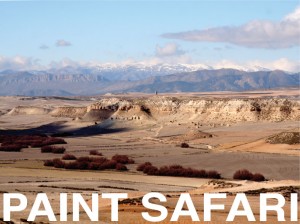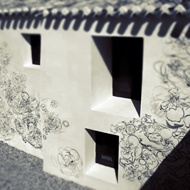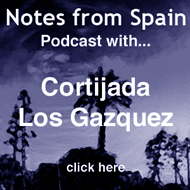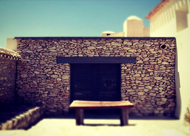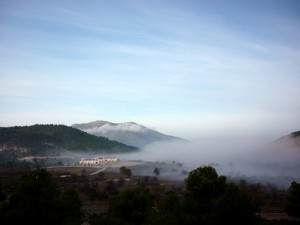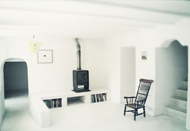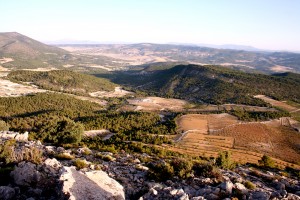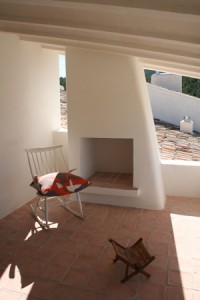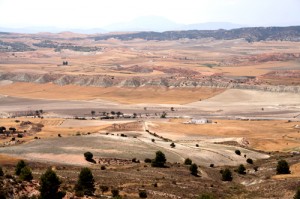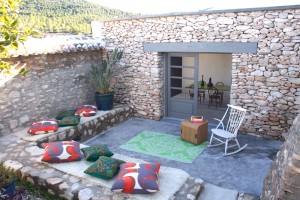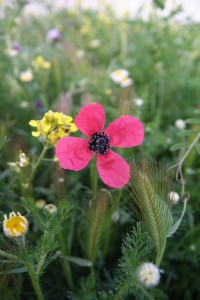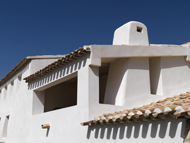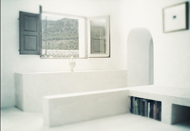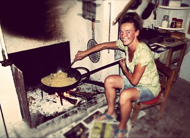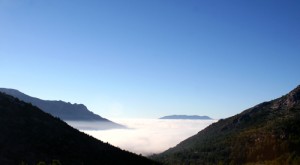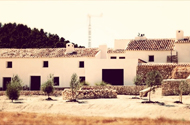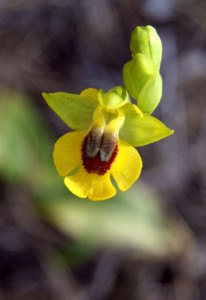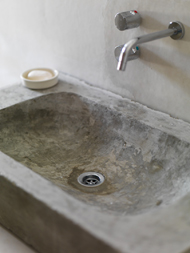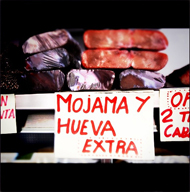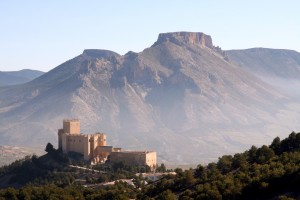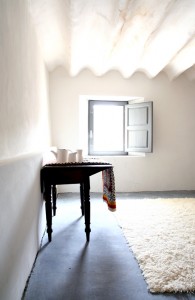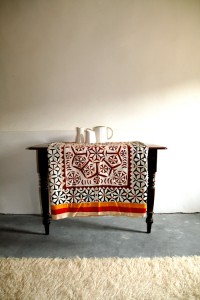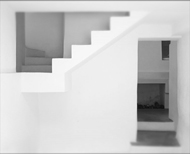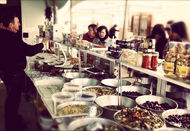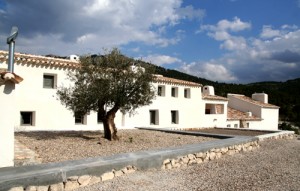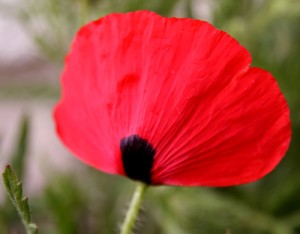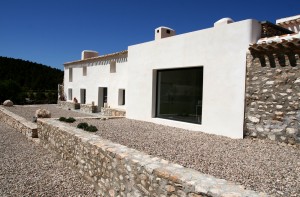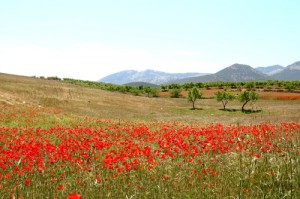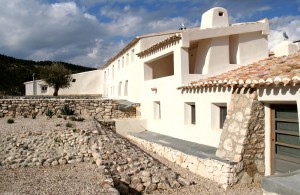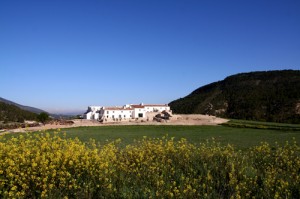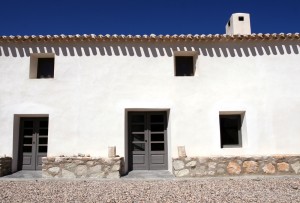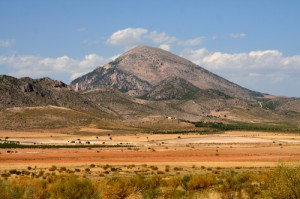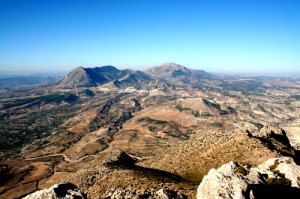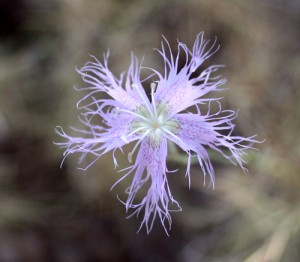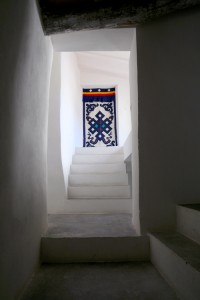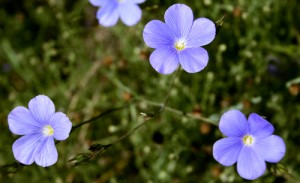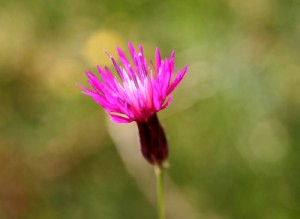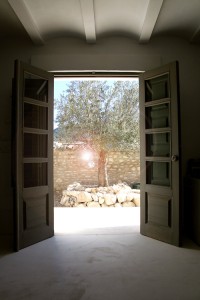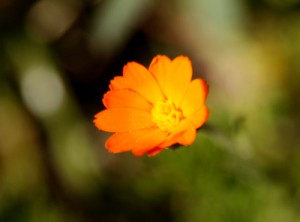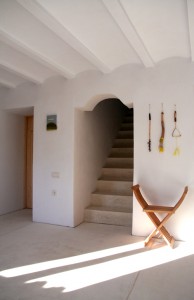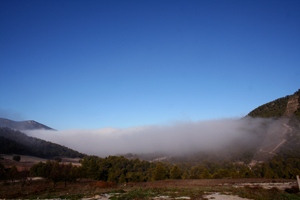January 21, 2014 at 5:51 pm
· Filed under Design, Environment, permaculture, Plantlife
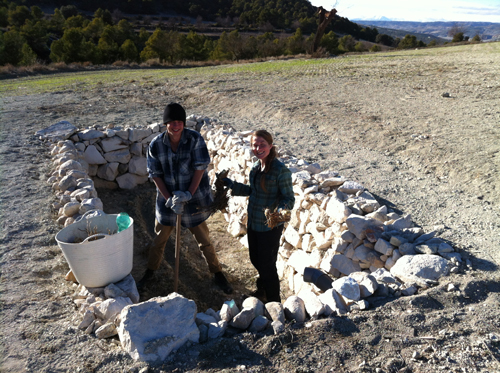
Here is French Franck (actually a Kiwi) and Canadian Fannie, two fab volunteers adding the final touches to our new grey water reed bed. That’s planting the giant cane Arundo Donax.
The weather is beautiful, warm with a cool breeze, ideal for planting…
and in they go. Finished in half an hour. I’ll let you know when they germinate.
Permalink
January 7, 2014 at 5:48 pm
· Filed under permaculture
Today at Los Gázquez we are lucky, especially on such a beautiful warm and sunny day, to have a fab volunteer from Quebec, Fannie. She’s keen to get into permaculture so she’s starting to build a swale as a ‘surface water catchment system’ for new olive trees…
The swale is built on a slope and on contour. This way the occasional heavy shower or snow drains into the depression and slowly feeds the roots of the olives helping them to grow. The trees you see on the left have all done well on this system and importantly in such a dry land they have thrived.
Permalink
November 29, 2009 at 9:03 am
· Filed under Design, Environment, permaculture
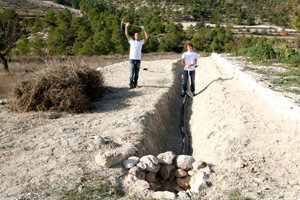 This autumn (even though it hadn’t really arrived until this weekend) has seen us take the opportunity to re-install the grey water system. All the grey water from Los Gázquez leaves the house by it’s own dedicated waste water system. When I say grey water, I mean water from the showers, basins, kitchen sinks, dishwasher and washing machine. What is more we only use ecologically safe detergents as this water is used to irrigate a terrace of fruit trees.
This autumn (even though it hadn’t really arrived until this weekend) has seen us take the opportunity to re-install the grey water system. All the grey water from Los Gázquez leaves the house by it’s own dedicated waste water system. When I say grey water, I mean water from the showers, basins, kitchen sinks, dishwasher and washing machine. What is more we only use ecologically safe detergents as this water is used to irrigate a terrace of fruit trees.
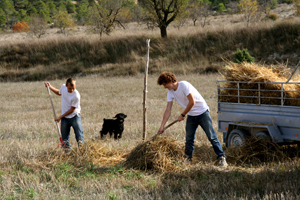 To help us with this task we had two wonderful young French men from Lyon. Lloyd and Romaine were on their gap year and they stayed with us for a few weeks on their return from a month in Morocco. (I have to say that if their parents are reading this we must say that they are a credit to them, they are welcome back here any time). The first thing to do was to dig an horizontal swale or ditch with an access point at one end which you can see in the foreground (below). In the excavation we laid field drain. Next we collect the barley straw from last summer and cut the straw from last springs wild flowers.
To help us with this task we had two wonderful young French men from Lyon. Lloyd and Romaine were on their gap year and they stayed with us for a few weeks on their return from a month in Morocco. (I have to say that if their parents are reading this we must say that they are a credit to them, they are welcome back here any time). The first thing to do was to dig an horizontal swale or ditch with an access point at one end which you can see in the foreground (below). In the excavation we laid field drain. Next we collect the barley straw from last summer and cut the straw from last springs wild flowers.
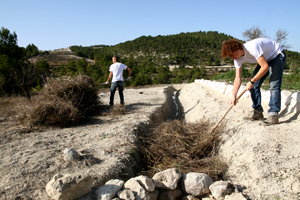 Firstly the wild flower straw goes over the field drain in the ditch. It has more structural integrity so the idea is that it supports the material we put over the top. We have adapted the idea from Permaculture techniques. The swale will hold the water stopping it from running off and giving it time to soak into the earth. When the earth is dry, being clay, it is as hard as concrete making whatever rainfall we have simply run away.
Firstly the wild flower straw goes over the field drain in the ditch. It has more structural integrity so the idea is that it supports the material we put over the top. We have adapted the idea from Permaculture techniques. The swale will hold the water stopping it from running off and giving it time to soak into the earth. When the earth is dry, being clay, it is as hard as concrete making whatever rainfall we have simply run away.
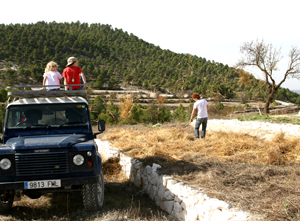 Lastly, with an audience of eight year olds on my car roof, we apply the barley straw. This is laid like a thick blanket over the whole terrace. The idea is that it will act like a sponge keeping the newly introduced grey water high in the earth, watering the tree roots from beneath. It is also a deep mulch keeping the clay earth soft and allowing worms and such to break down this organic matter, conditioning the soil.
Lastly, with an audience of eight year olds on my car roof, we apply the barley straw. This is laid like a thick blanket over the whole terrace. The idea is that it will act like a sponge keeping the newly introduced grey water high in the earth, watering the tree roots from beneath. It is also a deep mulch keeping the clay earth soft and allowing worms and such to break down this organic matter, conditioning the soil.
We have three terraces for this system so we can alternate where the grey water goes, freshly irrigating one terrace while the others rest. What is more it’s entirely organic and can be replenished or removed with ease. Last spring we planted four trees on the first terrace which was fed by the grey water in a canal. This was marginally successful but out of the four trees we planted, pear, persimmon, fig and apricot, the apricot died as I suspect it had too much water. The new system will hopefully combat that problem, Let’s see.
And thanks to Lloyd and Romaine.
Permalink
September 17, 2009 at 12:25 pm
· Filed under permaculture
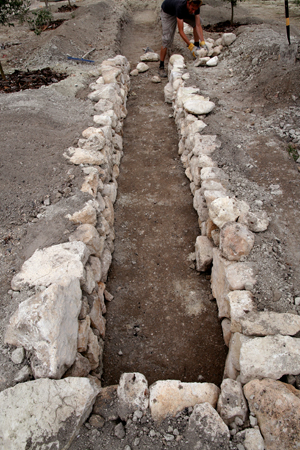 Here at Los Gazquez, with the help of able bodied Wwoofers, we are building a large swale. Permaculture design advocates the swale as a means of catching rainwater run off by contouring the feature across the landscape and enabling water infiltration into the soil. Here at Los Gazquez the first of these swales is to the front of the house within the new olive grove.
Here at Los Gazquez, with the help of able bodied Wwoofers, we are building a large swale. Permaculture design advocates the swale as a means of catching rainwater run off by contouring the feature across the landscape and enabling water infiltration into the soil. Here at Los Gazquez the first of these swales is to the front of the house within the new olive grove.
The concept of permaculture design is normally applied to the manifest application of bio-mechanical systems to enhance and preserve ecology in a sustainable fashion. That these designs approach maximum efficiency through strict adherence to mechanical lore reveals the vernacular within land usage as well as residential architecture. The result can often reveal the abstract integrity that is attached to the practical, which writer Jonathan Meads calls ‘art born of artlessness’. However, the vernacular is the unconscious work of craftsmen based on knowledge accumulated over years, whereas, design in the conscious pre-meditated application of a concept that appeals to the intellect.
But it is the spirit of the vernacular that appeals to us here at Los Gazquez. It is the pared down ‘first call’ of logic that excites us. Where there is only one way to make a construction with a pack of cards we intend to maximize the tolerances, the symmetry and the balance. The aim is not to achieve height through elevation but through art.
Our swale is not just a construct, it is a design to enhance contemplation. It’s dry stone fabrication is not elevated to restrict passage but hollowed to keep possession of that rare event in this alpine desert, rain. Boulder upon boulder is laid to retain the earth on either side. It’s alignment is not magnetic or celestial but at the bidding of gravity and it’s influence upon the elements in shaping the contours of the earth. It’s appearance is rectilinear as any other form within it’s relatively short 16 meters would be artifice, the contour being too large to induce a curve.
Our swale is an interruption within our landscape, it is an orchestration of indigenous form which at once enhances the ecology and arrests our attention, like a ravine without a bridge forces one to work out a strategy to reach the other side. Our swale is an interruption that opens the relationship between the viewer and the space.
Our swale draws us near to an historical narrative, to land use, climate and transition, to strategies born upon perceptions of inquiry.
Permalink


 This autumn (even though it hadn’t really arrived until this weekend) has seen us take the opportunity to re-install the grey water system. All the grey water from Los Gázquez leaves the house by it’s own dedicated waste water system. When I say grey water, I mean water from the showers, basins, kitchen sinks, dishwasher and washing machine. What is more we only use ecologically safe detergents as this water is used to irrigate a terrace of fruit trees.
This autumn (even though it hadn’t really arrived until this weekend) has seen us take the opportunity to re-install the grey water system. All the grey water from Los Gázquez leaves the house by it’s own dedicated waste water system. When I say grey water, I mean water from the showers, basins, kitchen sinks, dishwasher and washing machine. What is more we only use ecologically safe detergents as this water is used to irrigate a terrace of fruit trees. To help us with this task we had two wonderful young French men from Lyon. Lloyd and Romaine were on their gap year and they stayed with us for a few weeks on their return from a month in Morocco. (I have to say that if their parents are reading this we must say that they are a credit to them, they are welcome back here any time). The first thing to do was to dig an horizontal swale or ditch with an access point at one end which you can see in the foreground (below). In the excavation we laid field drain. Next we collect the barley straw from last summer and cut the straw from last springs wild flowers.
To help us with this task we had two wonderful young French men from Lyon. Lloyd and Romaine were on their gap year and they stayed with us for a few weeks on their return from a month in Morocco. (I have to say that if their parents are reading this we must say that they are a credit to them, they are welcome back here any time). The first thing to do was to dig an horizontal swale or ditch with an access point at one end which you can see in the foreground (below). In the excavation we laid field drain. Next we collect the barley straw from last summer and cut the straw from last springs wild flowers. Firstly the wild flower straw goes over the field drain in the ditch. It has more structural integrity so the idea is that it supports the material we put over the top. We have adapted the idea from Permaculture techniques. The swale will hold the water stopping it from running off and giving it time to soak into the earth. When the earth is dry, being clay, it is as hard as concrete making whatever rainfall we have simply run away.
Firstly the wild flower straw goes over the field drain in the ditch. It has more structural integrity so the idea is that it supports the material we put over the top. We have adapted the idea from Permaculture techniques. The swale will hold the water stopping it from running off and giving it time to soak into the earth. When the earth is dry, being clay, it is as hard as concrete making whatever rainfall we have simply run away. Lastly, with an audience of eight year olds on my car roof, we apply the barley straw. This is laid like a thick blanket over the whole terrace. The idea is that it will act like a sponge keeping the newly introduced grey water high in the earth, watering the tree roots from beneath. It is also a deep mulch keeping the clay earth soft and allowing worms and such to break down this organic matter, conditioning the soil.
Lastly, with an audience of eight year olds on my car roof, we apply the barley straw. This is laid like a thick blanket over the whole terrace. The idea is that it will act like a sponge keeping the newly introduced grey water high in the earth, watering the tree roots from beneath. It is also a deep mulch keeping the clay earth soft and allowing worms and such to break down this organic matter, conditioning the soil. Here at Los Gazquez, with the help of able bodied
Here at Los Gazquez, with the help of able bodied 





